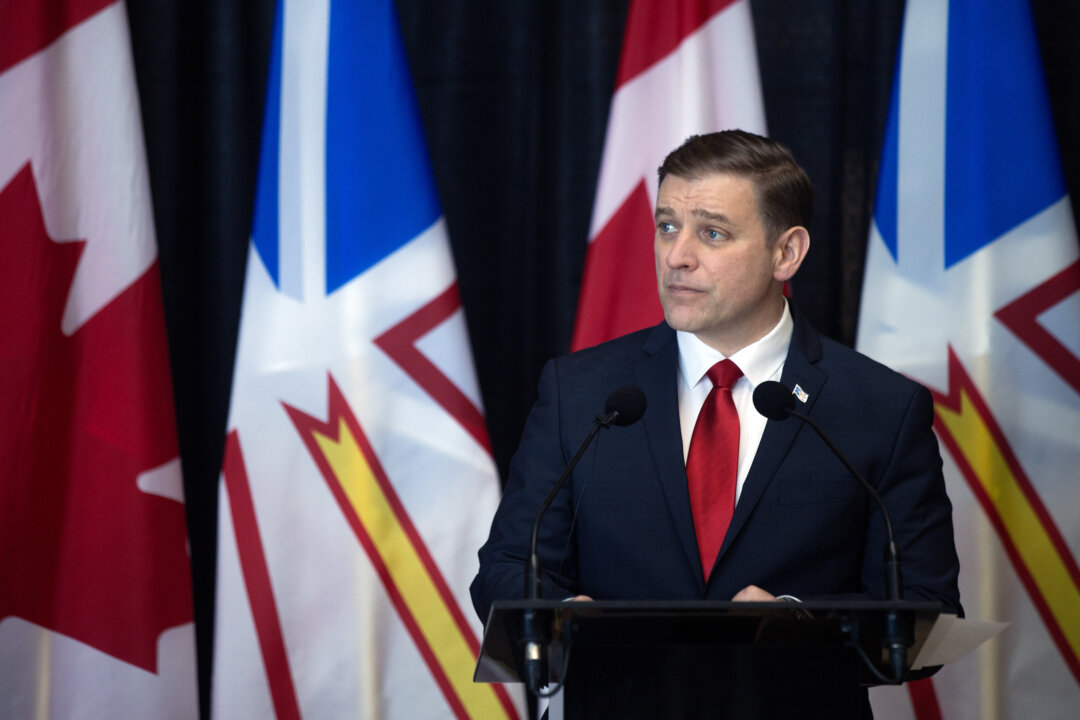The Newfoundland and Labrador government is delaying its plan to balance the books for another year, with a new budget forecasting a $372-million deficit as the province navigates uncertainty from decisions made south of the border.
With United States President Donald Trump threatening and, in some cases, implementing tariffs on Canadian goods, Finance Minister Siobhan Coady said Wednesday it was not the right time for the province to tighten its fist on spending.
“We’re in a period of global instability. There are a lot of uncertainties,” Coady told reporters before she tabled her budget. “Now is not the time to make the dramatic changes to ensure that we’re back to balance.”
The deficit in Coady’s $11-billion budget for the 2025-26 fiscal year is $120 million higher than last year. The province will borrow $4.1 billion to pay its bills, and its net debt will hit $19.4 billion. Ten percent of spending is dedicated to paying down debt.
Coady defended the deficit and the borrowing, noting that the forecasted shortfall represents about three percent of revenues for the year. Some of the billions of dollars in borrowing will pay for infrastructure, including a new mental health hospital opening next week in the capital of St. John’s, the Liberal minister said.
The province is setting aside a $200-million contingency fund to offset any fallout from Trump’s tariffs. The reserve is not part of the forecasted deficit; the government could fall further into the red if any of that money is used, officials said.
The largest line item in Coady’s budget was $4.4 billion for health care, which accounts for about 40 percent of total spending.
Newfoundland and Labrador is home to about 545,000 people, many of whom live in small communities spread out across a vast area. It has long struggled to recruit and retain doctors and nurses and provide health-care to its population.
Coady’s budget, titled “Smarter. Stronger. Better,” promises an end to deficits by the next fiscal year — as long as revenues increase and spending decreases slightly. The province had wanted to balance its budget in the fiscal year that ended March 31, but was unable to.
The budget forecasts that real GDP growth, adjusted for inflation, will be 4.4 percent in 2025 and fall to 1.6 percent in 2026. The province’s GDP grew by 6.7 percent in 2024.
The province expects GDP to rise to 3.5 percent in 2027, driven by expected income from energy projects that haven’t yet been built. Those include Equinor’s Bay du Nord offshore oil development, for which the company has not yet made an investment decision, officials said. Income from a sweeping new energy deal that would see Quebec pay much more for power from Labrador is also included.
There are four offshore oil installations operating off the east coast of Newfoundland and Labrador. Oil royalties will account for about 15 percent of the province’s income this fiscal year, the budget said.
It also allocates $90 million over three years to support offshore oil exploration.
Energy Minister Andrew Parsons said the leaders of the federal Liberal and Conservative parties seem to support an end to what he described as a “chilling effect” on oil and gas development.
“I’m excited by the conversations going on,” he told reporters.
Wednesday’s budget is the last under outgoing Liberal Premier Andrew Furey. He came to power in 2020 and won an election the following year, vowing to pull the province out of debt and right its financial course. His government has managed to shrink the deficit from roughly $1.6 billion in the 2020-21 fiscal year. The net debt, however, has shown stubborn growth.
Nonetheless, Coady pointed to a series of economic milestones the province hit recently, including the highest employment and household income rates in Newfoundland and Labrador’s history.
“I think we’re in good shape,” she said.










Leave feedback about this